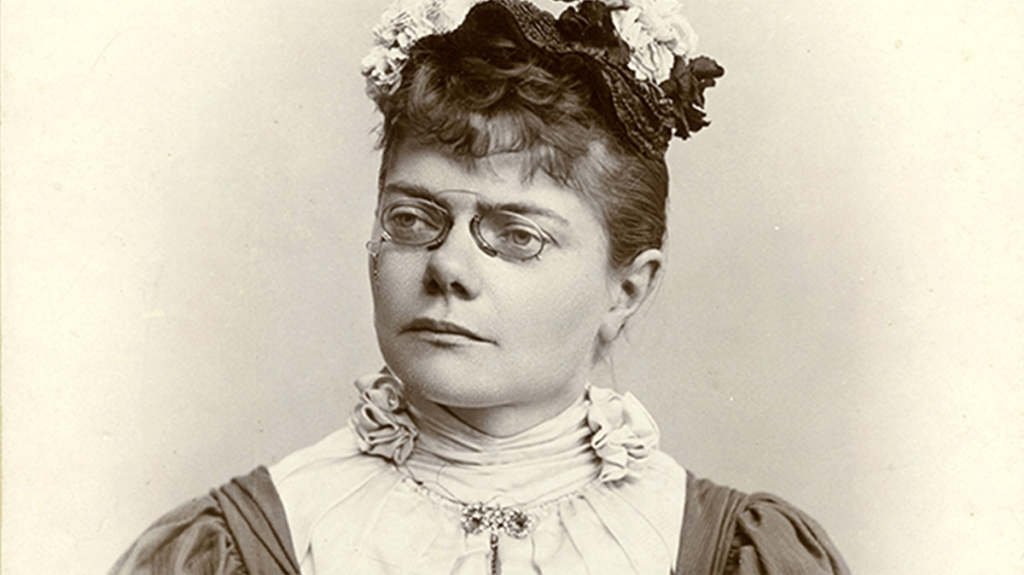Who Was Laura Valborg Aulin?
A glimpse at the composer of a grand, serious—and forgotten—masterpiece

Last week, while reading an article in The Guardian on women composers unjustly neglected over the years, I came across a brief but tantalizing mention of a Swedish musician named Laura Valborg Aulin, who apparently “wrote numerous works for piano, including the stunning Grande Sonate Sérieuse (1885) and chamber and organ music.” I made a note of the composer and the piece—any work with so lofty and promising a title, I thought, deserved further exploration.
From a few sources online, I was able to learn some rudimentary facts about Aulin’s life. She was born in 1860 in Gävle, a city in Sweden’s Norrland region, and grew up in Stockholm. Both of her parents were musical. Her mother had hoped to become a singer but was thwarted by poor health; her father, a classical scholar and secondary-school teacher, was a noted amateur violinist and violist. Aulin began her musical education at home, learning to play the piano from her grandmother, and soon was taking private lessons with Albert Rubenson, the director of the Royal Swedish Academy of Music. She enrolled at the academy at the age of 17 and spent the next five years studying the piano and composition, before a Jenny Lind Scholarship allowed her to travel to Copenhagen in 1885 and to Paris the following year. Under the tutelage of Benjamin Godard and Jules Massenet, Aulin gained plenty of admirers, judging by this diary entry of her sister-in-law’s: “Despite her total lack of outward charm, which Frenchmen are so highly appreciative of, she became popular due to her immense talent.”
Returning to Sweden, Aulin embarked on a career as a pianist, often collaborating with her younger brother, Tor, a composer and the leader of a well-regarded string quartet. In addition to teaching, she composed chamber works, art songs, and pieces for the piano—mainly evocative one-movement works, with titles such as Valse elegiaque and Album Leaves, the exception being a large-scale, four-movement Sonata in F minor, the aforementioned Grande Sonate Sérieuse. At the age of 43, however, despite being an established figure in Stockholm’s cultural circles, Aulin decided to leave the capital and move to the inland city of Örebro, 125 miles to the west. There she began work as an organist and a teacher, continuing to perform, though ceasing to write music. What was the reason behind the move, and why did she abandon her promising career as a composer? The answers to these questions seem lost to history. It’s possible that Aulin became fed up with the constant challenges she faced as a woman in Stockholm’s conservative musical culture, though some speculation exists that her issues were familial. She seems to have had certain difficulties with her mother and may have simply wanted to get away. Aulin’s provincial exile had one unfortunate consequence: her compositions were performed less and less often, and would soon be largely forgotten. She died in Örebro in 1928.
As I’ve been listening these past several days to the Sonata in F minor (on a recording made by the Italian-born Swedish pianist Lucia Negro), I’ve been wondering why this accomplished, moving, and brilliant work isn’t a part of every concert pianist’s repertoire. The sonata is all the more impressive when we remember that it was technically a student work, composed during that first year abroad in Denmark. An essay in the grand Romantic style, it is a younger cousin of Schumann’s Piano Sonata No. 3, which was also written in the key of F minor, dubbed Grande Sonate in its revised 1853 edition, and assigned an opus number of 14. Aulin must have known the work (at the very least, these coincidences suggest that she did), and her own sonata does indeed share something in temperament with Schumann’s whirlwind work of three decades earlier. The tempestuous first movement, which gets going in earnest after a gentle tease of an opening, is especially memorable, with wonderful melodies, clever harmonic modulations, a clear sense of development, and an architecture that lends to the drama. The score would give most pianists a proper workout—both physical and emotional. Certain parts of this opening movement suggest Tchaikovsky, Schubert, Chopin, and Grieg, though the similarities with Grieg, Aulin’s more famous Scandinavian counterpart, are most prominent in the beautiful second movement, as sweet and innocent as a child’s dream. An exquisite sequence of descending chords occurs twice in the movement, the aural equivalent of a slow and gentle descent, as if through a cloudy expanse, but with enough harmonic ambiguity to make us uncertain of the landing that awaits. A charming Chopinesque scherzo then surges, without break, into a roiling, virtuosic finale, its lines composed of maddening, cascading triplets. The ending is both electric and breakneck, ever on the verge of falling apart—an appropriate conclusion to a thrilling ride.
I’ve also been listening, with no less interest, to Aulin’s two string quartets—the first in F major composed in 1884, the second in E minor in 1890—both attractive, appealing pieces worthy of a place in the canon. (The Quartet No. 2 was given its premiere in 1890. Then the score lay dormant for more than a century, the next performance coming in 1991.) Aulin’s music deserves a far wider audience—of this I’m certain, even on the basis of these few pieces. If only there weren’t so many perplexing questions about her life, so many leads resulting in frustrating dead ends. How lovely it would be if several dedicated pianists, singers, and chamber musicians were to wrest this composer from the realm of obscurity. Let the revival commence!
Listen to Lucia Negro perform Aulin’s Sonata in F minor, opus 14:

